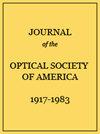Direct current magnetic Hall probe technique for measurement of field penetration in thin film superconductors for superconducting radio frequency resonators.
Journal of the Optical Society of America and Review of Scientific Instruments
Pub Date : 2022-05-01
DOI:10.1063/5.0083309
引用次数: 1
Abstract
Superconducting Radio Frequency (SRF) cavities used in particle accelerators are typically formed from or coated with superconducting materials. Currently, high purity niobium is the material of choice for SRF cavities that have been optimized to operate near their theoretical field limits. This brings about the need for significant R & D efforts to develop next generation superconducting materials that could outperform Nb and keep up with the demands of new accelerator facilities. To achieve high quality factors and accelerating gradients, the cavity material should be able to remain in the superconducting Meissner state under a high RF magnetic field without penetration of quantized magnetic vortices through the cavity wall. Therefore, the magnetic field at which vortices penetrate a superconductor is one of the key parameters of merit of SRF cavities. Techniques to measure the onset of magnetic field penetration on thin film samples need to be developed to mitigate the issues with the conventional magnetometry measurements that are strongly influenced by the film orientation and shape and edge effects. In this work, we report the development of an experimental setup to measure the field of full flux penetration through films and multi-layered superconductors. Our system combines a small superconducting solenoid that can generate a magnetic field of up to 500 mT at the sample surface and three Hall probes to detect the full flux penetration through the superconductor. This setup can be used to study alternative materials that could potentially outperform niobium, as well as superconductor-insulator-superconductor (SIS) multilayer coatings on niobium.用于超导射频谐振器薄膜超导体场穿透测量的直流磁霍尔探头技术。
用于粒子加速器的超导射频(SRF)腔通常由超导材料形成或涂覆超导材料。目前,高纯度铌是SRF空腔的首选材料,这些空腔已被优化到接近其理论场极限。这就需要大量的研发工作来开发下一代超导材料,以超越铌,并跟上新加速器设施的需求。为了获得高质量因子和高加速梯度,腔体材料应能够在高射频磁场下保持超导迈斯纳状态,而不会被量子化磁涡穿透腔壁。因此,涡旋穿透超导体时的磁场是SRF空腔性能的关键参数之一。需要开发测量薄膜样品上磁场渗透开始的技术,以减轻传统磁力计测量受薄膜方向、形状和边缘效应强烈影响的问题。在这项工作中,我们报告了一个实验装置的发展,以测量通过薄膜和多层超导体的全通量穿透场。我们的系统结合了一个可以在样品表面产生高达500 mT磁场的小型超导螺线管和三个霍尔探头,以检测通过超导体的全部通量。该装置可用于研究可能优于铌的替代材料,以及铌上的超导体-绝缘体-超导体(SIS)多层涂层。
本文章由计算机程序翻译,如有差异,请以英文原文为准。
求助全文
约1分钟内获得全文
求助全文

 求助内容:
求助内容: 应助结果提醒方式:
应助结果提醒方式:


